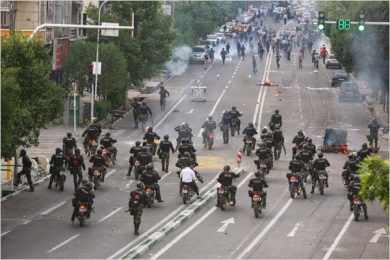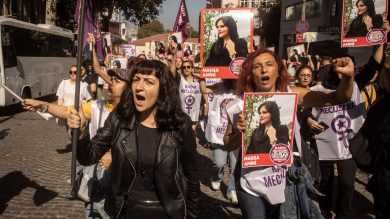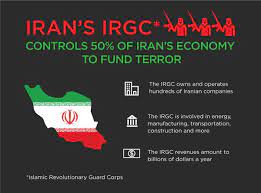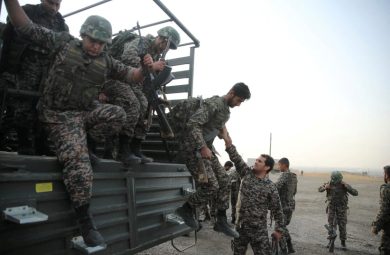The Islamic Revolutionary Guard Corps (IRGC) has long been implicated in widespread human rights violations both within Iran and across the region. Established after the 1979 Islamic Revolution, the IRGC was originally tasked with safeguarding the regime and its revolutionary ideals. Over time, it has evolved into a powerful military, economic, and political entity that employs violent tactics to suppress dissent, enforce state policies, and maintain control.
Behind the IRGC’s operations lie countless stories of suffering—individuals and communities whose fundamental rights have been violated. This report delves into the IRGC’s role in human rights abuses, its tactics, and the experiences of victims who have borne the brunt of its repression.
1. The IRGC’s Role in Human Rights Violations
A. Suppression of Protests
• The IRGC, often through its Basij paramilitary force, plays a central role in suppressing protests in Iran. Demonstrations over political corruption, economic inequality, and civil rights are met with brutal crackdowns.
• Protesters face beatings, mass arrests, torture, and even execution. High-profile examples include the suppression of:
• 2009 Green Movement protests: Widespread violence left dozens dead, with many subjected to detention and torture.
• 2019 fuel price protests: Over 1,500 people were reportedly killed during one of the deadliest crackdowns in Iran’s history.
B. Arbitrary Arrests and Detention
• The IRGC targets political activists, journalists, students, and ethnic and religious minorities, detaining them without due process.
• Detained individuals are often denied access to legal representation and subjected to coerced confessions under torture.
C. Torture and Inhumane Treatment
• Reports from detainees describe physical torture, sexual violence, psychological abuse, and inhumane prison conditions.
• Many victims of torture are forced to make false confessions broadcast on state-controlled media, further victimizing them and their families.
D. Targeting Women and Minorities
• Women who defy mandatory hijab laws or protest gender inequality are frequently targeted. Many are harassed, beaten, or detained.
• Ethnic and religious minorities, including Kurds, Baloch, and Baháʼís, face systemic discrimination, arrests, and violent repression.
E. Exporting Human Rights Abuses
• Beyond Iran’s borders, the IRGC has been involved in human rights violations through its support for militias and proxies in Iraq, Syria, Yemen, and Lebanon.
• It has been implicated in the displacement of civilians, extrajudicial killings, and targeting of opposition figures in exile.
2. Stories from Victims
A. Mahsa Amini and the Women’s Rights Movement
• Mahsa Amini, a 22-year-old Kurdish woman, died in September 2022 after being arrested by Iran’s morality police, which operates under IRGC influence.
• Her death sparked nationwide protests, with women burning their hijabs and cutting their hair in defiance. The IRGC and its affiliates responded with violence, killing and detaining thousands.
B. Student Protesters
• In 1999, student protests at Tehran University were violently suppressed by the IRGC and Basij forces. Students were beaten, detained, and some disappeared without a trace.
• Survivors recall horrific beatings and long-term psychological trauma from their experiences in detention.
C. Ethnic and Religious Minorities
• Kurds in Iran: The IRGC has cracked down on Kurdish activists and communities, labeling them as separatists or terrorists. Villages have been raided, and activists have faced execution after sham trials.
• Baháʼís: As a persecuted religious minority, the Baháʼí community faces systematic oppression, with IRGC forces involved in arrests, property seizures, and denial of education and employment opportunities.
D. Victims of Proxy Wars
• Civilians in Syria have suffered immensely due to the IRGC’s support for Bashar al-Assad’s regime
Barrel bombings, sieges, and chemical attacks have displaced millions, with the IRGC actively supporting these campaigns.
3. Methods of Suppression
A. Surveillance and Intimidation
• The IRGC monitors activists and dissidents through extensive surveillance networks, including digital spying on social media and encrypted messaging apps.
• Families of activists are often harassed or threatened, pressuring individuals to remain silent.
B. Propaganda and Disinformation
• The IRGC controls media outlets to spread disinformation, justify crackdowns, and label activists as “foreign agents” or “terrorists.”
C. Internet Blackouts
• During protests, the IRGC enforces nationwide internet blackouts to disrupt communication and prevent evidence of abuses from reaching global audiences.
4. International Recognition of IRGC Abuses
A. Global Condemnation
• Human rights organizations, including Amnesty International and Human Rights Watch, have documented and condemned the IRGC’s role in violations, calling for accountability.
• The United Nations has repeatedly criticized Iran for systemic abuses, highlighting the IRGC’s role in suppressing protests and targeting minorities.
B. Sanctions
• The United States, European Union, and other nations have imposed sanctions on IRGC leaders and entities for their involvement in human rights violations.
• Sanctions have targeted individuals responsible for torture, extrajudicial killings, and crackdowns on protests.
C. Advocacy by Exiled Activists
• Iranian activists in exile play a critical role in raising awareness about the IRGC’s abuses, sharing stories of victims, and lobbying for global action.
5. Recommendations for Global Action
A. Accountability Mechanisms
• Support international investigations into human rights violations committed by the IRGC.
• Advocate for trials of IRGC officials in international courts for crimes against humanity.
B. Targeted Sanctions
• Expand targeted sanctions on IRGC leaders and entities directly involved in abuses, ensuring effective enforcement.
C. Support for Victims
• Provide asylum and support services to Iranian dissidents, activists, and victims fleeing persecution.
• Fund programs that document human rights abuses and preserve evidence for future accountability.
D. Digital Freedom Initiatives
• Invest in technologies that help Iranian activists bypass censorship and communicate securely, undermining the IRGC’s surveillance efforts.
Conclusion
The IRGC’s role in human rights violations is extensive and deeply entrenched, affecting countless individuals and communities. From suppressing domestic protests to exporting abuses through proxy wars, the IRGC operates with impunity under the protection of the Iranian regime. However, the courage of victims and the advocacy of international actors offer hope for justice and accountability. Through sustained global pressure, targeted sanctions, and support for activists, the international community can help challenge the IRGC’s oppressive tactics and amplify the voices of those fighting for freedom and human rights in Iran.
Join Our Newsletter!
Stay informed with the latest updates, news, and ways to take action in the fight for justice and global security. Sign up now to get updates delivered straight to your inbox!




